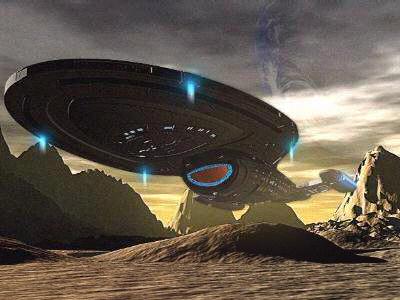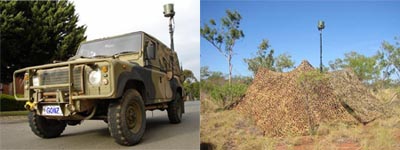Counter-Terrorist Steganography Search Engine
  |
My Masters Degree thesis involved investigating the feasibility of employing steganalysis as a search engine strategy to detect steganographic content. No doubt many will have heard of the process in connection with speculation of Osama Bin Laden's means of distributing plans for terrorist activities to his followers. The likes of the NSA, CIA, FBI, MI5 and ASIO interested in bombs and sabotage (did I get enough keywords in?) may not be ignoring steganography's potential for both good and bad.
Here is sample output (plus the Tripod banner) completely generated by "turnkey" C++ code I've developed. The links point directly to the home locations of suspect files sniffed from live packet traffic. They appear in ranked order and with an indication of the software used to encode them. The actual steganalysis routine I've selected is Niels Provos's Stegdetect. The top image of Voyager contains no stego and is not featured in the search engine's output. However, the second image contains a 10K text file encoded with JSteg. The search engine was successful in: As for the other images listed, I suspect that JPHide is a rather effective encoding scheme since it so often resembles what I assume are "innocent" images. You can test your detector against my Stego Test Gallery! |
My final thesis presentation was awarded best presentation by IEEE and the AOC! See the award photos here!
Download a copy of my finished thesis in English or Spanish.
The appendices (English only) are A, B, C, D, E, F, G, H, I and J.
Need Acrobat Reader? Try here.
This website is now the world's number one site for "Counter Terrorist Stegonography" - check it out on Google! and is featured at RMIT's Alumni page.It is particularly satisfying to see that, as the only cyber-focussed thesis in the class of 2002, it was a decade ahead of its time, with the AOC now incorporating cyber warfare alongside EW and IO. I have certainly used the material to great effect in my AOC presenttions ever since!
Want to know more? Invite me to your English or Spanish conference.

I also received Air Commander Australia's Commendation for my design of Australia's first tactically mobile electronic surveillance vehicle, the SNIFFR.
© F C Gonzalez 2001-2009
Some other sites of mine:
5EBI Spanish Radio
Andalusian Flamenco Society of Victoria
Fight Spam! Click Here!